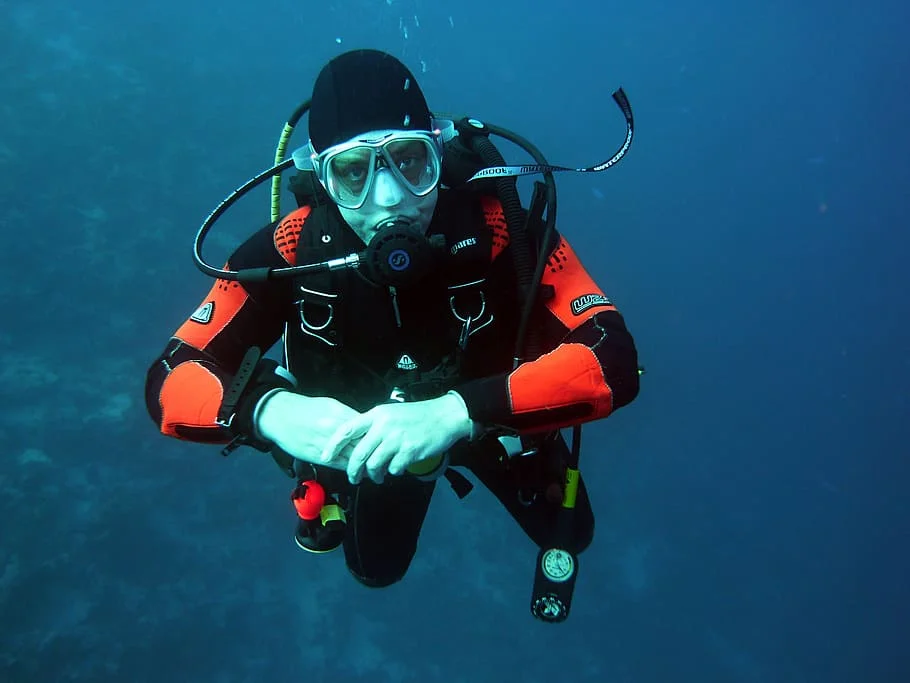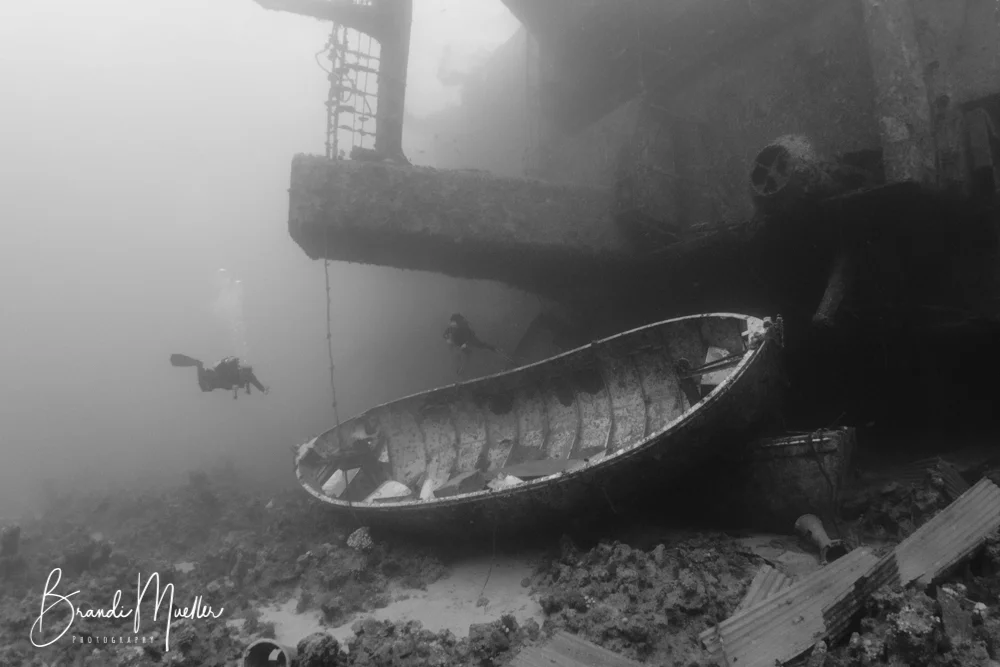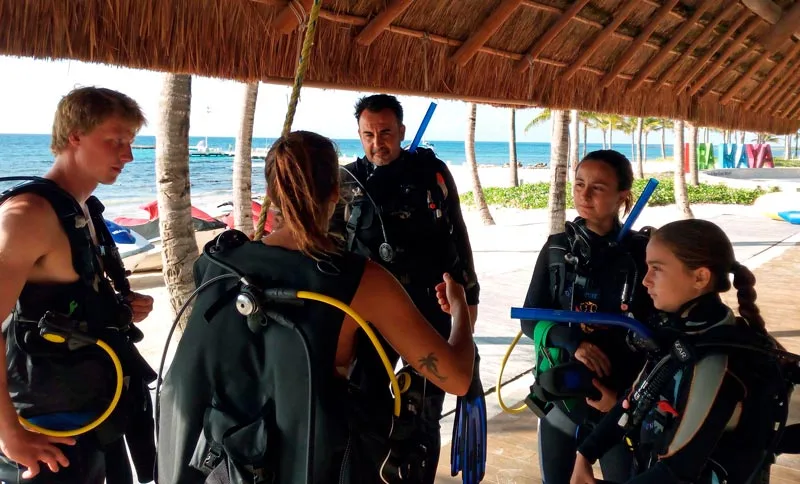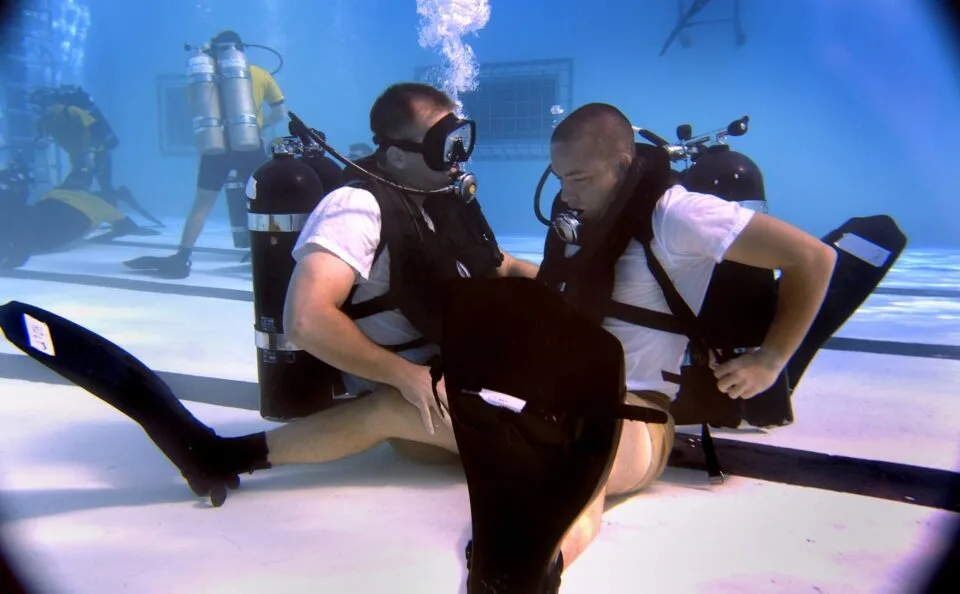Style: Jacket, Wing or Hybrid?
A JACKET STYLE BCD inflates the entire jacket (the back and front), giving you a bear hug feel. It’s the most popular option for Open Water students. The downside is they’re bulky and some divers feel the BCD squeezes them when fully inflated. When the jacket is fully deflated it fit loosely, so you might need to adjust the straps so it fits you properly while you’re diving.
A BACK INFLATION BCD only inflates the back portion. The advantage of this style is that they are more streamlined and comfortable than jackets. A sub-category of back inflation BCDs are backplate and wing set ups. This style is popular for divers who want a clean, minimalist set up. Wings are less bulky and require less exertion underwater which makes them a great option for wreck and cave divers.
A HYBRID STYLE BCD will inflate 3/4 of the back and 1/4 of the front. These are great for people who like a jacket style but also want the underwater buoyancy control of a back inflation BCD.
Cold Water vs Warm Water Diving
Cold water divers need to get a BCD with enough buoyant life capacity. Lift capacity is a measurement of how much weight the BCD can hold on the surface when the bladder is fully inflated. If you plan to dive in a thick wetsuit, you’ll then need to wear more weight to counteract the higher buoyancy. When the BCD doesn’t have enough lift capacity you could yourself struggling to stay afloat at the surface.
Warm water diving requires much less lift capacity and having a BCD with a lot of lift can actually cause you more harm than good.
Local vs Travel Diving
A GENERAL PURPOSE BCD is the best choice for cold water divers. They provide a lot of buoyant lift and integrated weight systems that are needed when using thick wetsuits or dry suits. This type of BCD typically has lots of D-rings and big pockets. The downside to general purpose BCDs is Do you want to get a BCD but don’t know which one to pick? Don’t panic. It’s a very common problem among divers. There’s so much gear out there that it’s hard to decide what to get. Having your own scuba gear means you’ll have a great fitting BCD, that you know how to use, every time you go diving. Follow these easy 7 steps to find the model that fits your needs best. they are the heaviest option.
A TRAVEL SPECIFIC BCDs is lightweight and compact. They have a low profile, and are designed to fold in half, which allows it to be easily stored in your suitcase or dive bag. The downside to these types is they have less lift capacity and smaller weight pockets.
DUAL PURPOSE BCDs are a hybrid of general purpose and travel BCDs. They pack small for dive trips while still providing enough buoyant lift and ballast weigh capacity to be worn with a thick wetsuit or dry suit.
Weight Integration
Weight integration allows you to ditch your weight belt by allowing to put the weights directly into your BCD. This is done by using quick release pouches. Integrated weights is especially useful to cold water divers using thick wetsuits. If you decide to get this type of weight system make sure the pouches stay securely locked in but are also easy to take off.
Attachment Points
BCDs come with D-rings that allow you to clip on accessories like surface markers, whistles and lights. Tech and wreck should look at getting a BCD that has at least 4 D-rings, one on each shoulder and hip strap. This will allow you to attach a stage cylinder.
Pockets
Are the best option for bringing accessories underwater and staying streamlined. They typically have either Velcro or zippers. Zippers are the most secure way to close a pocket, but they can get jammed with sand. Velcro allows for easy access but they tend to become less secure with age.
Size
Like any piece of gear, getting a great fit is important and will ensure that your BCD is comfortable. Try it on first, or if buying online, use the sizing guide provided. If you plan to wear your BCD with a thick wetsuit or dry suit, keep that in mind while sizing yourself. You might even consider going up a size if you’re on the border between two sizes.
Women’s Specific
The main difference is the women’s version has a shorter back length to compensate for the female torso. This means the cylinder doesn’t rest on the base of your spine which makes carrying a heavy tank less strenuous. Other differences are the placement of the chest strap on the BCD and the width and shape of the shoulder straps.




